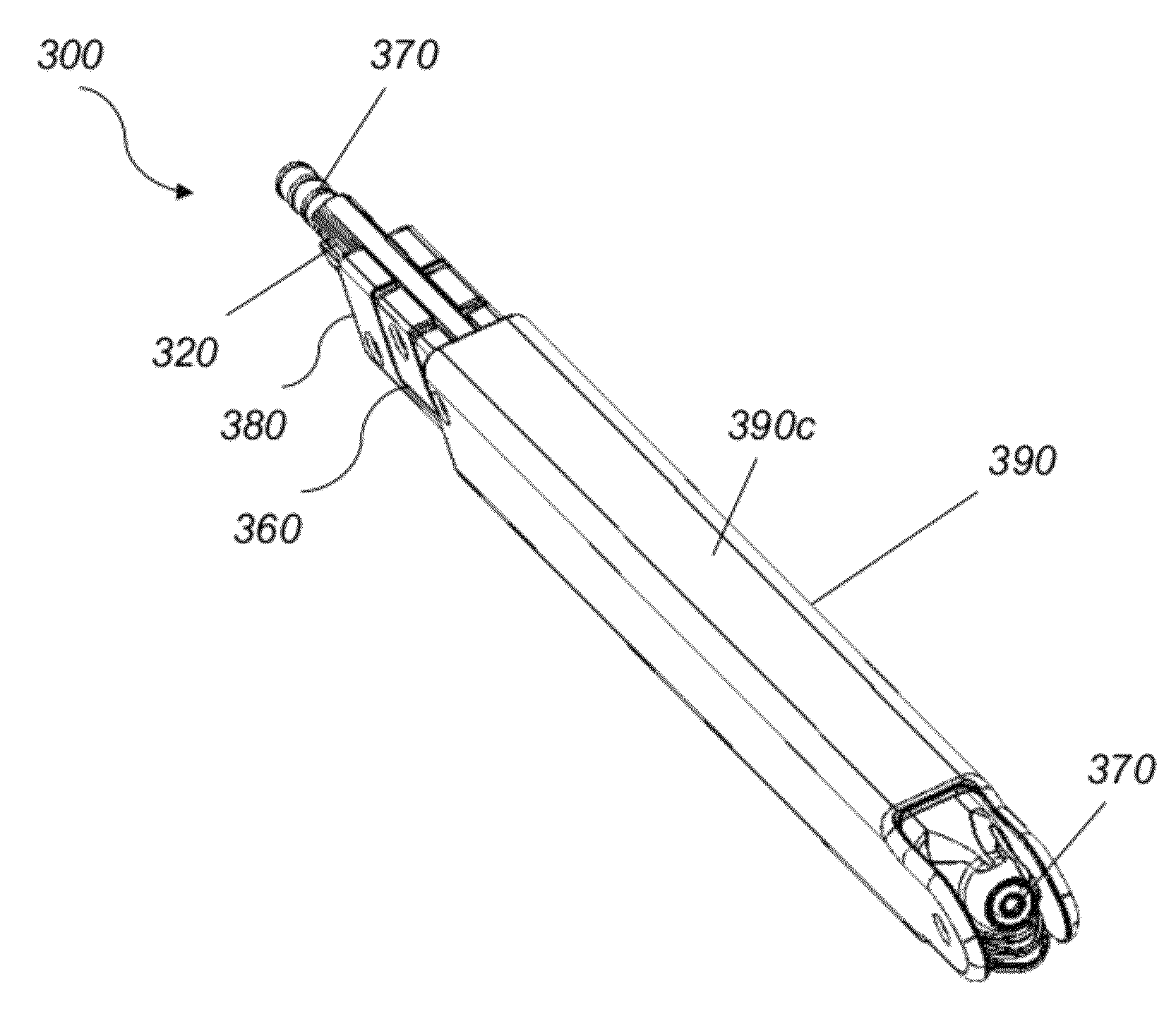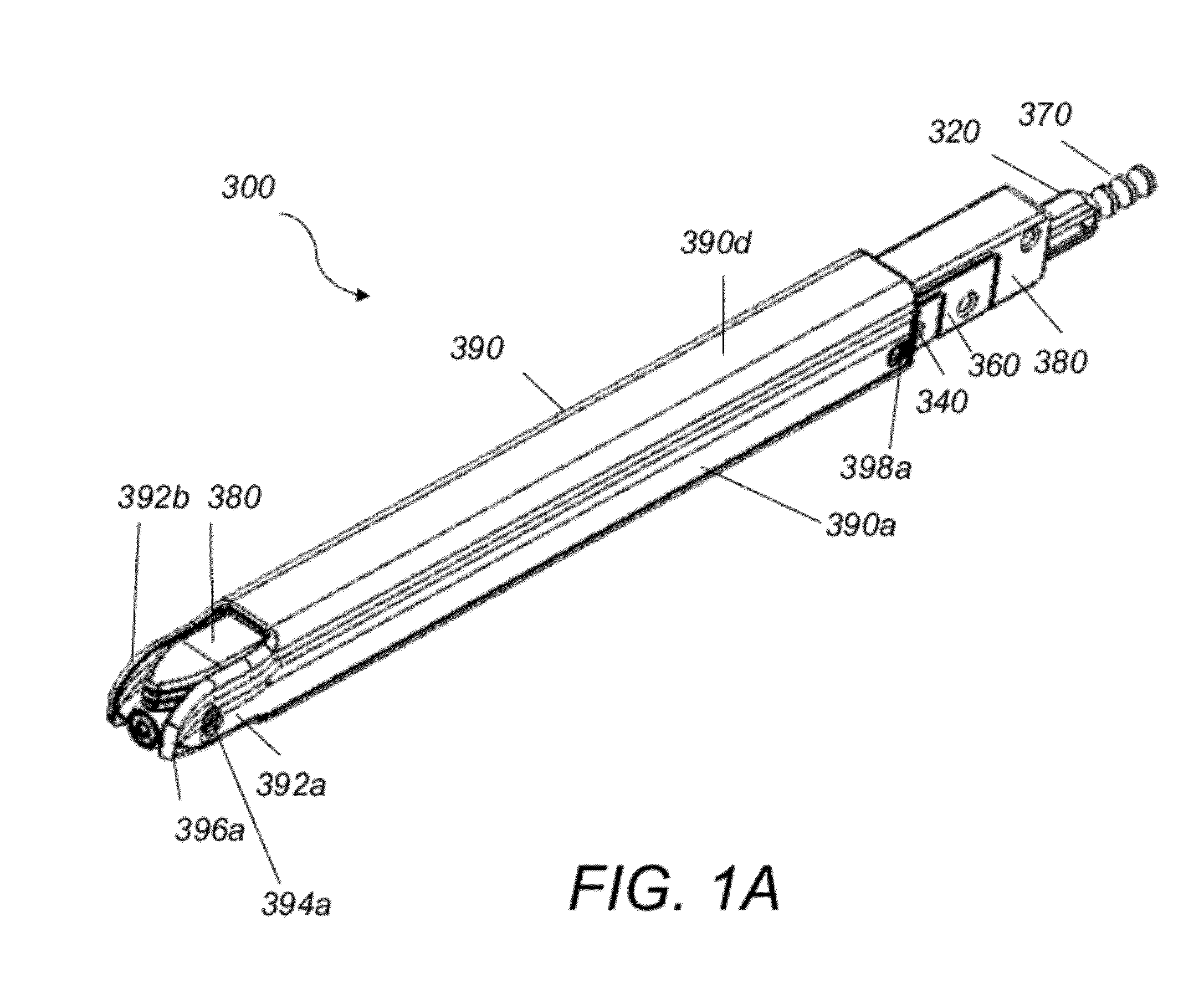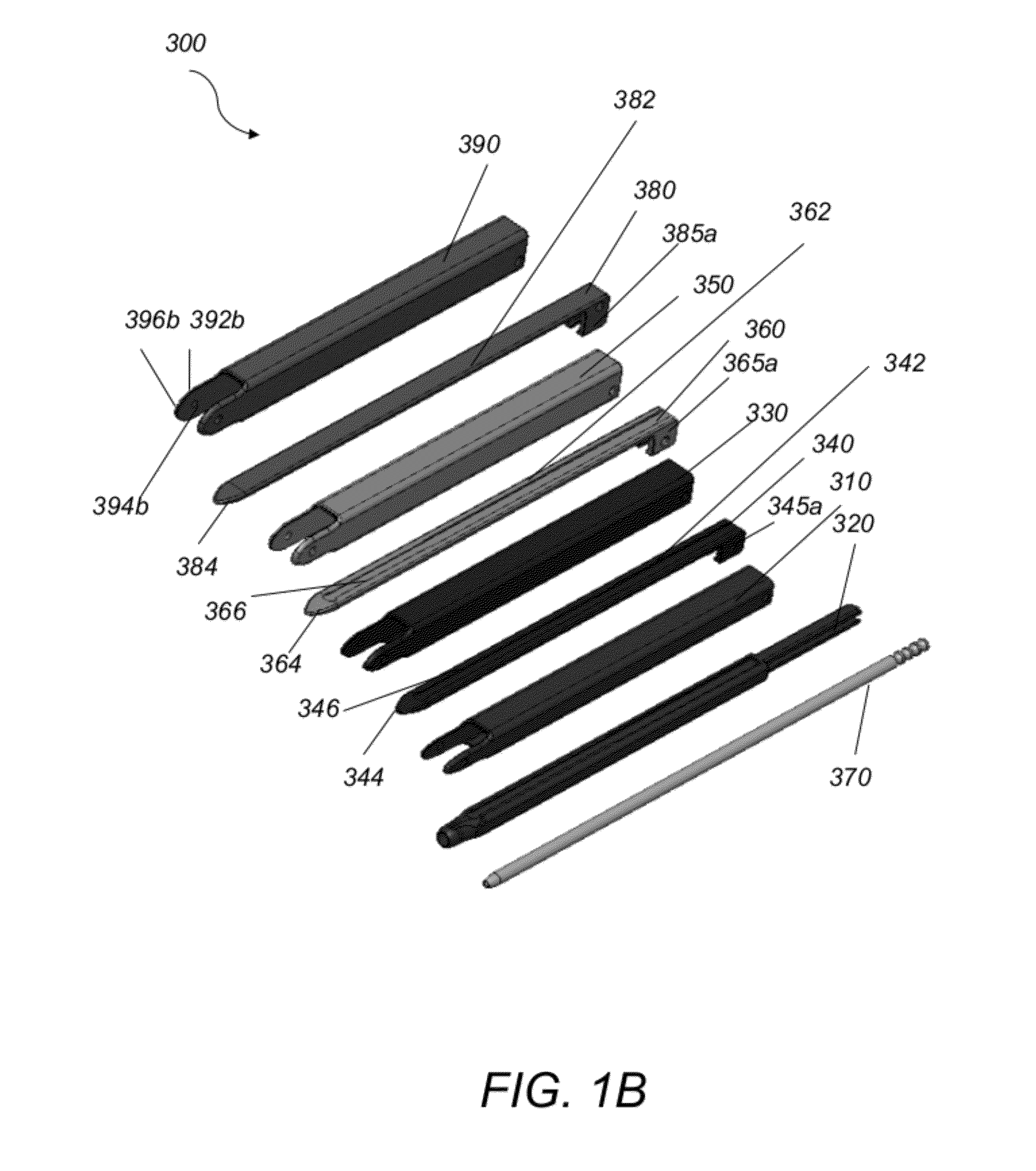Methods, tools and devices for percutaneous access in minimally invasive spinal surgeries
a technology for spinal surgery and percutaneous access, applied in the field of methods, tools and devices for providing percutaneous access in minimally invasive spinal surgery, access cannula, etc., can solve the problems of prolonged recovery time, increased risk of infections, and extensive tissue trauma
- Summary
- Abstract
- Description
- Claims
- Application Information
AI Technical Summary
Benefits of technology
Problems solved by technology
Method used
Image
Examples
Embodiment Construction
[0113]The present invention relates to improved methods, tools and devices for providing percutaneous access in minimally invasive spinal surgeries, and more particularly to cannula system that includes multi-stage dilators and multi-stage cannulae.
[0114]Referring to FIG. 1A, and FIG. 1B, access cannula system 300 includes a 14 mm working cannula 390 surrounding sequentially a 14 mm dilator 380, a 12 mm cannula 350, a 12 mm dilator 360, a 10 mm cannula 330, a 10 mm dilator 340, an 8 mm cannula 310, an 8 mm dilator 320 and a nerve probe dilator 370. Working cannula 390 includes an elongate tube 390 having a rectangular cross section and four side surfaces 390a, 390b (shown in FIG. 3B), 390c (shown in FIG. 4A), and 390d. Side surfaces 390a and 390b are opposite and parallel to each other and their distal ends terminate in parallel fork extensions 392a, 392b, respectively, that are tapered. Fork extensions 392a, 392b are rigid, are used for distraction purposes, and are dimensioned to ...
PUM
 Login to View More
Login to View More Abstract
Description
Claims
Application Information
 Login to View More
Login to View More - R&D
- Intellectual Property
- Life Sciences
- Materials
- Tech Scout
- Unparalleled Data Quality
- Higher Quality Content
- 60% Fewer Hallucinations
Browse by: Latest US Patents, China's latest patents, Technical Efficacy Thesaurus, Application Domain, Technology Topic, Popular Technical Reports.
© 2025 PatSnap. All rights reserved.Legal|Privacy policy|Modern Slavery Act Transparency Statement|Sitemap|About US| Contact US: help@patsnap.com



